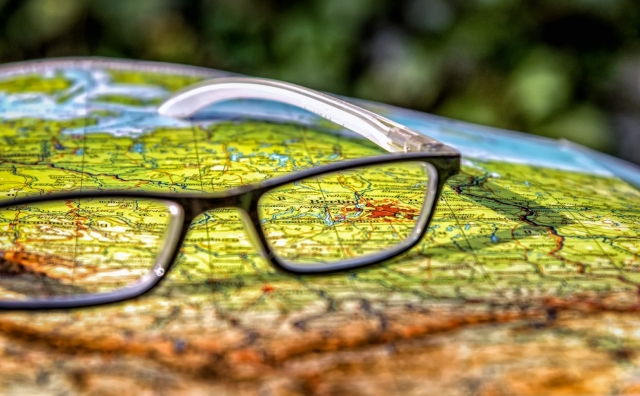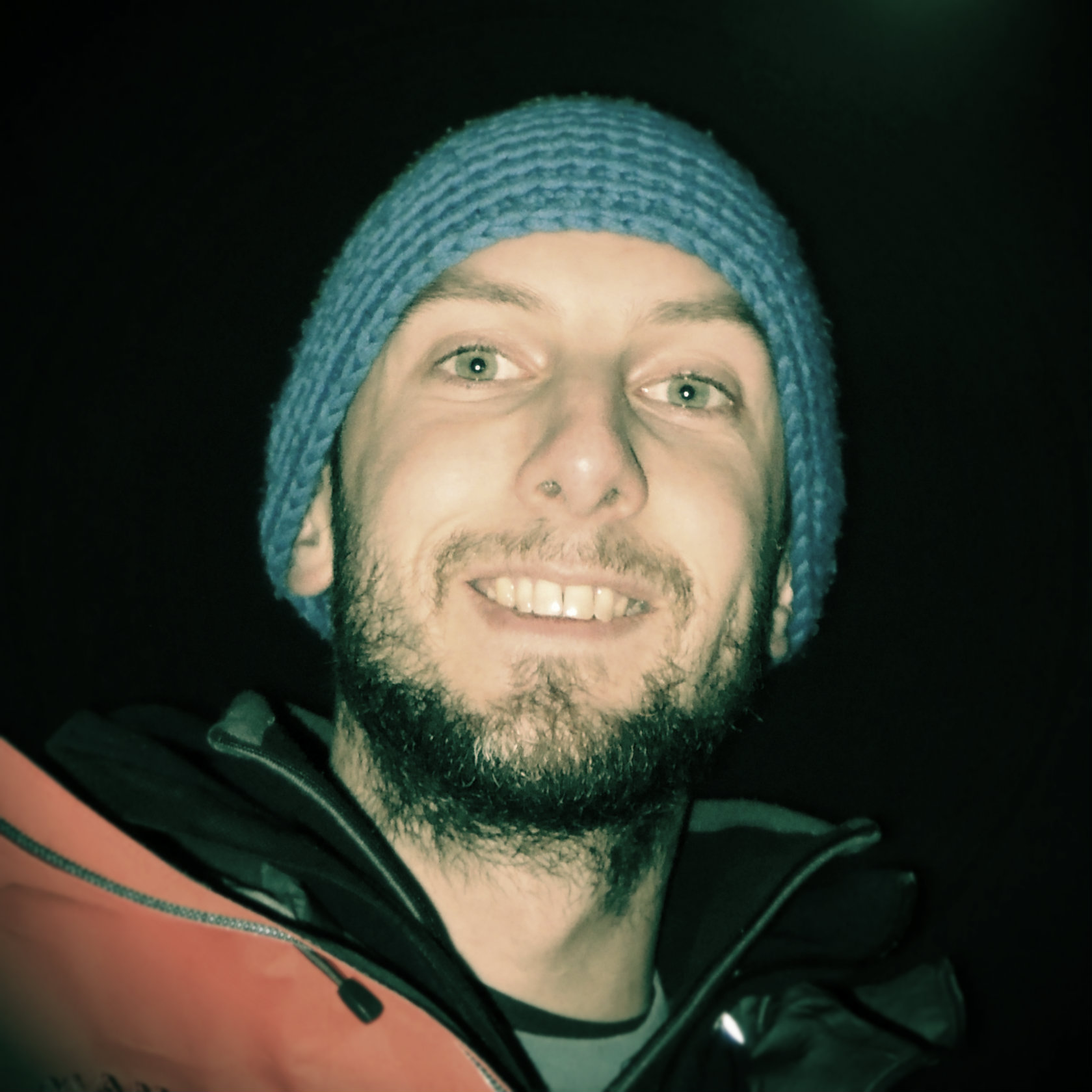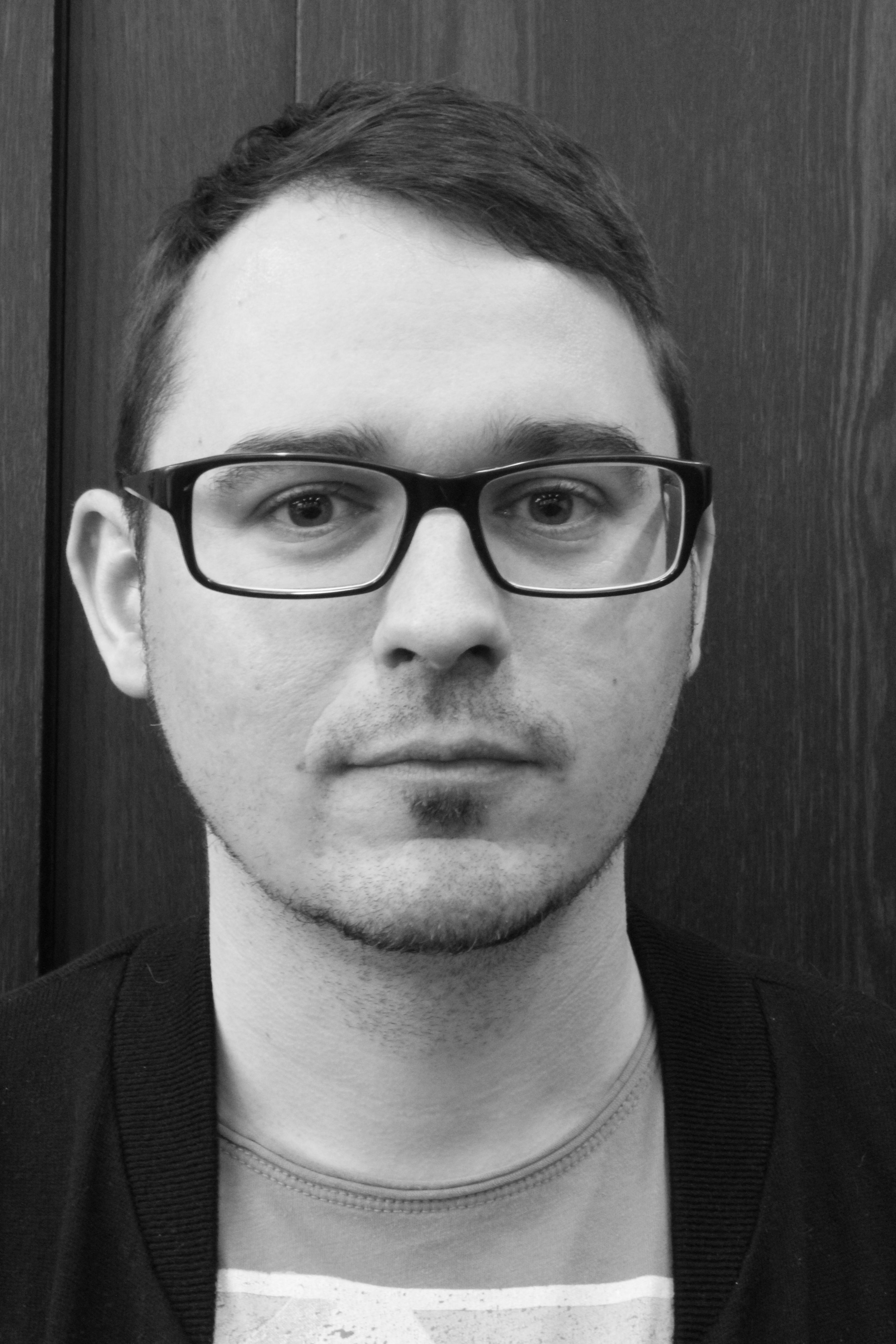Florian Heigl
New citizen science paper published
Today (10th October 2016) we published a new paper in Remote Sensing with the title "Comparing Road-Kill Datasets from Hunters and Citizen Scientists in a Landscape Context".
It is open access and therefore free for everyone to read: http://www.mdpi.com/2072-4292/8/10/832/htm
We really wish to thank all citizen scientists in Project Roadkill for investing time and reporting data.
Here is the abstract of our published paper:
Comparing Road-Kill Datasets from Hunters and Citizen Scientists in a Landscape Context
Authors: Florian Heigl 1,*, Carina R. Stretz 1, Wolfgang Steiner 2, Franz Suppan 3, Thomas Bauer 3, Gregor Laaha 4 and Johann G. Zaller 1
1Institute of Zoology, University of Natural Resources and Life Sciences Vienna
2Institute of Wildlife Biology and Game Management, University of Natural Resources and Life Sciences Vienna
3Institute of Surveying, Remote Sensing and Land Information, University of Natural Resources and Life Sciences Vienna
4Institute of Applied Statistics and Computing, University of Natural Resources and Life Sciences Vienna
Road traffic has severe effects on animals, especially when road-kills are involved. In many countries, official road-kill data are provided by hunters or police; there are also road-kill observations reported by citizen scientists. The aim of the current study was to test whether road-kill reports by hunters stem from similar landscapes than those reported by citizen scientists. We analysed the surrounding landscapes of 712 road-kill reportings of European hares in the province of Lower Austria. Our data showed that road-killed hares reported both by hunters and citizens are predominantly surrounded by arable land. No difference of hedges and solitary trees could be found between the two datasets. However, significant differences in landcover classes and surrounding road networks indicate that hunters’ and citizen scientists’ data are different. Hunters reported hares from landscapes with significantly higher percentages of arable land, and greater lengths of secondary roads. In contrast, citizens reported hares from landscapes with significantly higher percentages of urban or industrial areas and greater lengths of motorways, primary roads, and residential roads. From this we argue that hunters tend to report data mainly from their hunting areas, whereas citizens report data during their daily routine on the way to/from work. We conclude that a citizen science approach is an important source for road-kill data when used in addition to official data with the aim of obtaining an overview of road-kill events on a landscape scale.
1. European Citizen Science Conference
Poster presentation “Data quality in citizen science projects considering roadkills” by Florian Heigl, Daniel Dörler and Johann Zaller; 1. European Citizen Science Conference in Berlin, Germany; 19. - 21. May 2016. More information regarding the conference: http://www.ecsa2016.eu/
The presented poster:
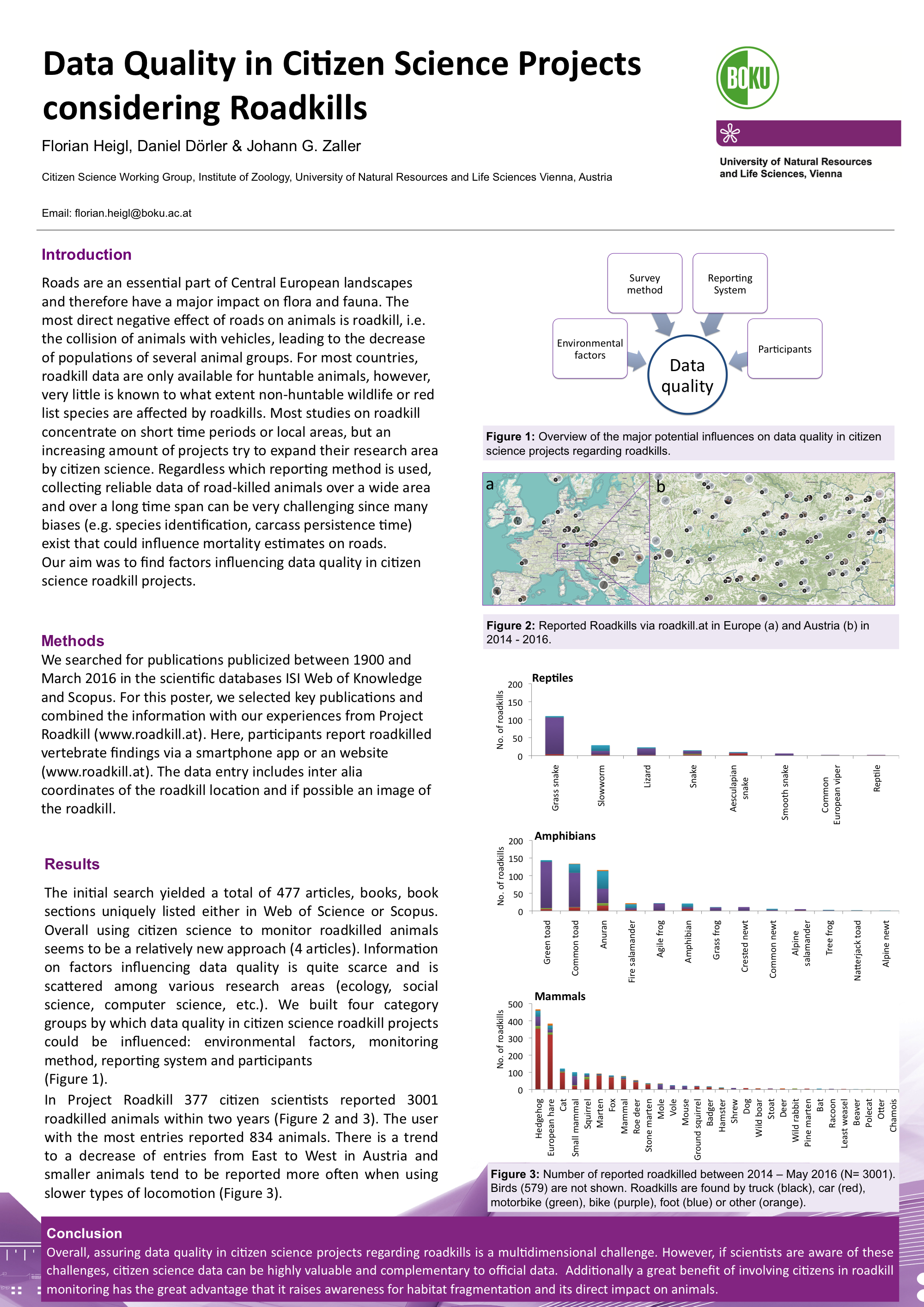
Team
We understand our project team as everyone who contributes to the project. Of course our citizen scientists are in the center of attention, because without their data reports, the discussions about the recorded animal species and the improvement suggestions for the apps, website and the method itself, the project would not be possible. Some of our citizen scientists are also presented in our team blog.
The project Roadkill is carried out at the University of Natural Resources and Life Sciences Vienna, therefore some investigations are also carried out within the framework of master theses. Currently running master theses are:
- Patrick Diem: Hotspot analysis of roadkill in Austria based on citizen science.
- Raphael van Dyck: Analysis of surrounding landscape and road types for roadkill hedgehogs
In addition, there are people in the project who contribute significantly to the success, be it through programming and designing the website and apps or through scientific work. We are happy to have such a great team and that it is constantly growing and becoming more diverse due to our Citizen Scientists.
|
|
Florian Heigl
|
|
|
Daniel Dörler
|
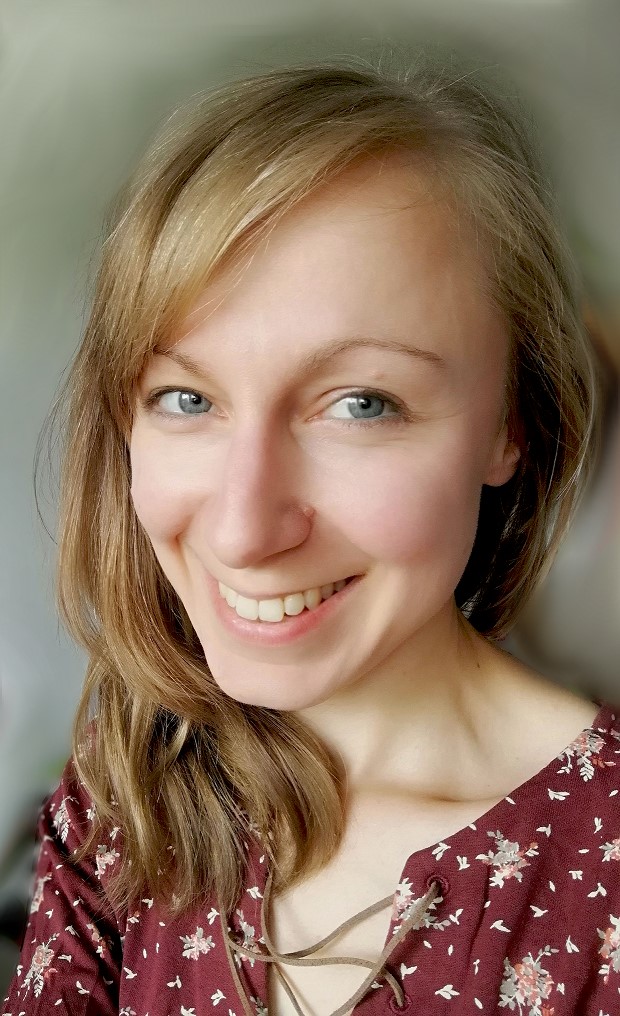 |
Janette Siebert
|
 |
Philipp Hummer
|
|
|
Johann Zaller
|
Contact
Florian Heigl
Citizen Science Working Group
Institute of Zoology
University of Natural Resources and Life Sciences, Vienna
Gregor-Mendel-Straße 33
1180 Wien
This email address is being protected from spambots. You need JavaScript enabled to view it.
EGU 2015
15th April 2015, Carina Stretz, master student at the Institute of Zoology at the University of Natural Resources and Life Sciences, Vienna presented the poster Project Roadkill: Defining hotspots in European Hare vehicle collisions using datasets from citizen scientists and professionals at the European Geosciences Union
General Assembly 2015. More than 11000 scientists are attending the EGU GA to talk about latest trends and findings in a variety of scientific fields.
The presented poster:
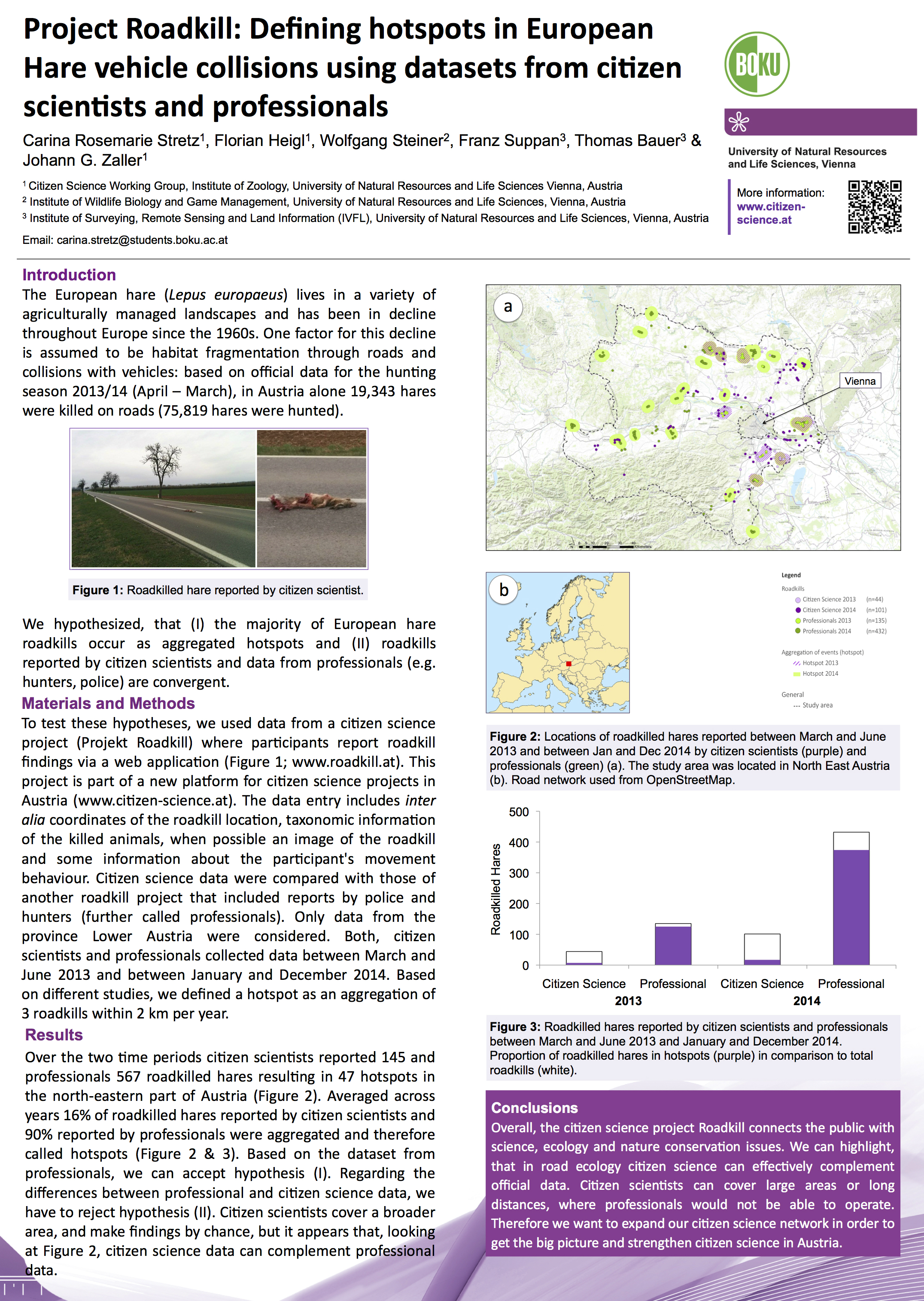
Dialogue at eye level
In recent years citizen science is getting more important in professional science. More and more professional scientists are integrating citizens in their research. However what is citizen science and where does it come from? Which impact does citizen science have on the cooperation of laypersons and professionals? How do citizen science projects work and are there examples in Austria? Can we do something to promote citizen science in Austria and make it easier for laypersons?
Florian Heigl and Daniel Dörler are answering these questions in German in the "Jahrbuch 2015 der Bildung für eine nachhaltige Entwicklung", which was published in June 2015.
More Information regarding the Jahrbuch: https://www.umweltbildung.at/shop/bne-reloaded/


